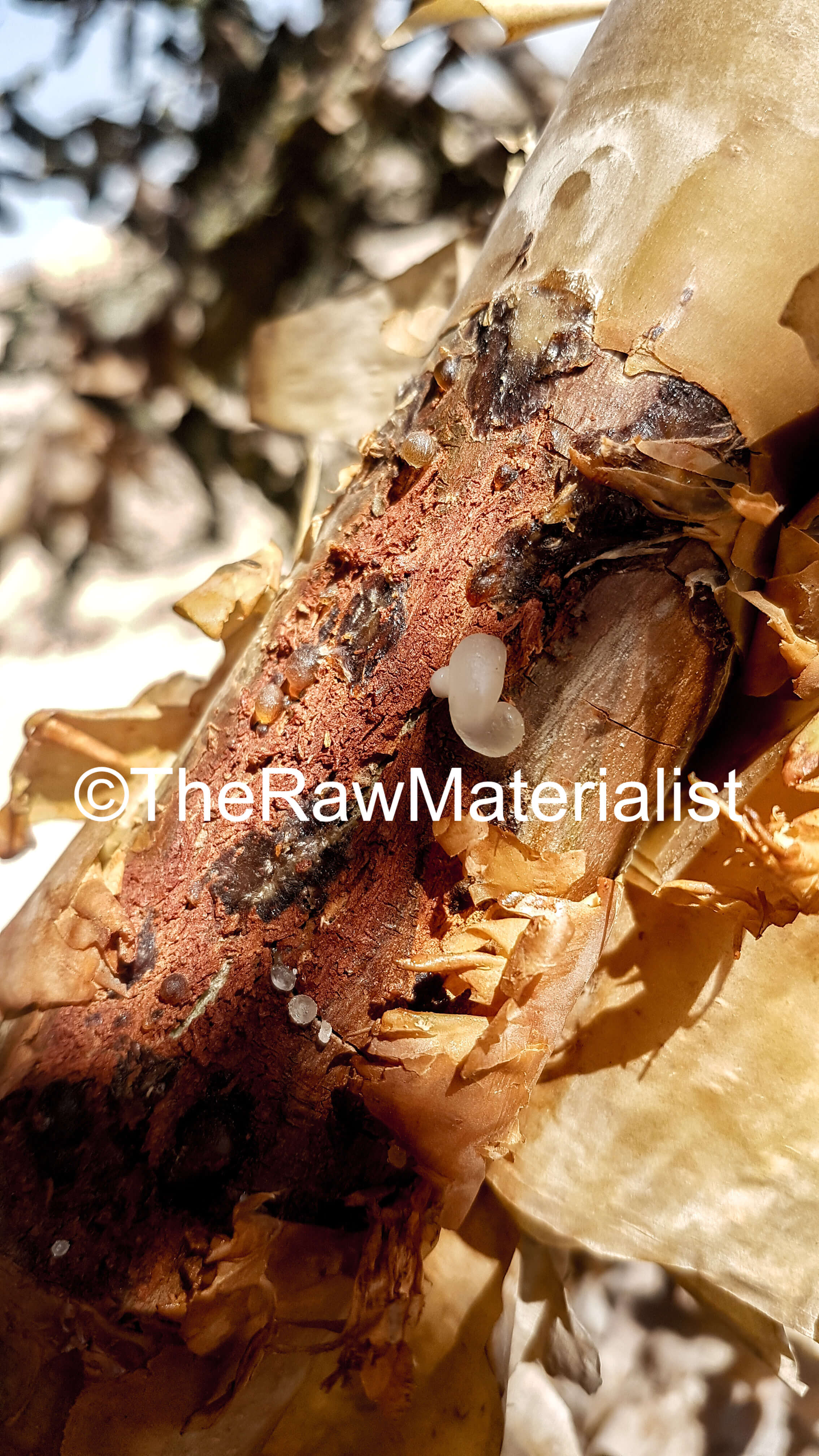Olibanum Resinoid
Naturelle
Balsamic Ambery > Ambery Cistus > Incense

Crédits photo: ScenTree SAS
Latin name :
Boswellia sacra (former Boswellia carteri)
Botanical profile :
Olibanum is the name given to the gum exuded by a tree belonging to the Boswellia genus and the Burseraceae family.
This botanical family also includes trees producing Elemi EO, Elemi Resinoid, Elemi SFE or Myrrh EO, Myrrh Resinoid, Myrrh Absolute or Myrrh SFE. We also find Opoponax EO, Opoponax Resinoid as well as Frankincense EO and Frankincense Resinoid.
This botanical family also includes trees producing Elemi EO, Elemi Resinoid, Elemi SFE or Myrrh EO, Myrrh Resinoid, Myrrh Absolute or Myrrh SFE. We also find Opoponax EO, Opoponax Resinoid as well as Frankincense EO and Frankincense Resinoid.
Geographic origin :
The geographical distribution of Boswellia sacra is expanded to a large region located from the African horn to the Arabian Peninsula. This tree can be found in Yemen (Hadramaut regions), Oman (Dhofar regions) as well as in part of Eritrea, Sudan and particularly in Somalia.
Chemotypes :
There are about twenty known species within the genus Boswellia. Only a small part of these are used for perfumery. The following species are listed in order of annual production volume:
Boswellia sacra (Boswellia carterii) in Oman, Yemen and in Somalia
Boswellia serrata in India and Pakistan.
Boswellia neglecta in Ethiopia and Kenya
Boswellia frereana in Somalia
Boswellia papyrifera, in Sudan and Ethiopia
All these species are subject to the respect of the CITES agreement.
Boswellia sacra (Boswellia carterii) in Oman, Yemen and in Somalia
Boswellia serrata in India and Pakistan.
Boswellia neglecta in Ethiopia and Kenya
Boswellia frereana in Somalia
Boswellia papyrifera, in Sudan and Ethiopia
All these species are subject to the respect of the CITES agreement.
Extraction process :
The first step to obtain this ingredient is to collect the gum. To do this, the tree, which must be at least 8 to 10 years old, is incised using the ''tapping '' method. This incision, generally made during the dry season, will activate the immunitary response of the tree and will exude a whitish gum with a milky aspect. This gum is sometimes called ''tear '' because of its appearance. The producer will then come to collect the amat a couple of days later. (Depending on the species, region and community, the time between incision and harvest and the number of incisions may differ).
The gum is then stored carefully to let it harden and to amass a large volume. This volume will then be sold to an intermediary, who will judge its quality and will be in charge of the exportation. At this stage, the importer is able to retain the crude product or to carry out different extractions such as :
Hydrodistillation: Used to obtain Olibanum EO with a yield of 5 to 9% from the biomass. This extraction is mainly done with water without steam. It should also be noted that this step is increasingly carried out directly in the growing country, under the impulse of perfume multinationals.
Solvent extraction: Used to obtain Olibanum Resinoid and Olibanum Absolute - For more information about this process, please refer to patent WO2014195976A2 (2014)
SFE extraction: Used obtain Olibanum SFE
The gum is then stored carefully to let it harden and to amass a large volume. This volume will then be sold to an intermediary, who will judge its quality and will be in charge of the exportation. At this stage, the importer is able to retain the crude product or to carry out different extractions such as :
Hydrodistillation: Used to obtain Olibanum EO with a yield of 5 to 9% from the biomass. This extraction is mainly done with water without steam. It should also be noted that this step is increasingly carried out directly in the growing country, under the impulse of perfume multinationals.
Solvent extraction: Used to obtain Olibanum Resinoid and Olibanum Absolute - For more information about this process, please refer to patent WO2014195976A2 (2014)
SFE extraction: Used obtain Olibanum SFE
Major Components :
Data not available.
- Uses in perfumery :
- Data not available.
- Other comments :
- It is important to note that Boswellia species are endangered due to overexploitation, the time needed before the first harvest (about 10 years), the lack of good farming practices and finally, the political instabilities. Today, demand is much higher than offer, so it is important to carry out many actions to preserve the species and the populations relying on them.
Notable actions are the following: CITES protection // In 2014, the Ministry of agriculture of Oman has created an arboretum devoted to Boswellia with the aim of gathering and propagating more than 5,000 seeds annually during 8 years for local producers // Several technologies are also available to ensure better traceability and incision monitoring in order to avoid ''exhausting '' the trees. - Volatility :
- Heart/Base
- Appearance :
- Brown red paste
- Stability :
- Price Range :
- Donnée indisponible.
- Aromatherapy :
Informations provided below are taken from reference works in aromatherapy. They are given for information purposes only and can not constitute medical information, nor engage the responsibility of ScenTree.
Olibanum owns numerous antimicrobial properties (high level of pinenes). Traditional asian medicines have been using it since the ages for many applications, especially for the airways as well as for anxiety.

Crédits photo: ScenTree SAS
- EINECS number :
- 289-620-2
- FEMA number :
- 2816
- Allergens :
- This ingredient does not contain any allergen.
- IFRA :
- This ingredient is not restricted
To learn more about IFRA's standards : https://ifrafragrance.org/safe-use/library
ScenTree is solely responsible for the information provided here.
Do you sell any of the raw materials? Would you like to let our users know?
Send an email to fournisseurs@scentree.co to learn about our advertising opportunities.
